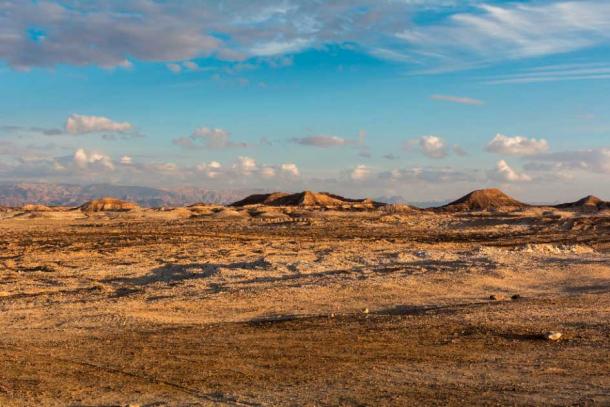Precious Ancient Fabrics from the ‘Israeli Silk Road’ Found in a Trash Heap
Written by on January 23, 2023
Archaeologists have uncovered rare, printed fabrics dating back around 1,300 years. While the fabrics had originated in the East, they were found in an Israeli dump! It is the first evidence of a previously unknown ancient ‘Israeli Silk Road’.
The valuable fabrics were discovered by an interdisciplinary team from the Israel Antiquities Authority (IAA), Ben-Gurion University, Göttingen University, and Haifa University. Dating back to the Early Islamic Period, the reason these delicate fabrics are deemed so important is because they were imported from India and China along the Silk Road.
The Silk Road was a network of trade routes connecting Asia to Europe and Africa. Originating in China , the Silk Road traversed Kazakhstan, Kyrgyzstan, Uzbekistan and Turkmenistan in Central Asia and then and through Iran, Iraq, and Syria, before linking with Turkey and eventually Europe. This famous ancient trade route also spanned southwards into India and the Arabian Peninsula, and it also passed through Mecca and Medina. Now, there is evidence for an equivalent Israeli Silk Road.
The legendary Silk Road crossed continents to connect Asia and Europe (Kevin Case / CC BY SA 3.0 )
Fabrics Offer Insights into Israeli Silk Road
Prof. Guy Bar-Oz from the University of Haifa, who is leading the excavation, told Times of Israel that his team of researchers excavated rubbish deposits at the Nahal Omer archaeological site in the Aravah. This arid desert region includes much of southern Israel and Jordan, from the Gulf of Aqaba in the south to the Dead Sea in the north.
The Aravah desert region is one of the harshest climates on Earth. However, centuries ago, it may have been a heavily traveled trade route, an Israeli Silk Road. ( Roman / Adobe Stock)
The archaeologists discovered “fabrics, clothing, and leather,” which they say provide new insights into the material culture and daily lives of the people who lived in the region. It is thought that the cotton fabrics likely originated from India and Nubia; however, the silks provide “strong evidence of trade with China.” Previous excavations at this site uncovered decorative fabrics from India and silk from China dated to between the 7th to 8th century AD, and it is thought that these new discoveries fall into this date range.
The Ancient Origins of Tie-Dye Printing
Some of the silks displayed an “ikat” design, which is depicted in 6th-century AD wall paintings in the Ajanta Caves in India. The word “ikat” is from the Malay-Indonesian word “mengikat” – meaning “to tie” or “to bind” and this ancient dyeing technique was refined to create patterns on silk and other fabrics. The design was achieved by artisans tying off patches of silk threads before dyeing them to create a characteristic blurriness on the edges of the pattern.
A report in Haaretz said ikat designs are “rarely found” in the Middle East, and that by the Early Islamic Period trade on the Nabataean Incense Road had ceased. This means the discovery of ikat designed fabrics might suggest that luxury goods were being transported from the Far East and India to Mediterranean countries via the Aravah and other roads leading to Mecca and Medina.
Ikat weaving is one of the oldest forms of textile decoration. Recently found fabric remains indicate this luxury good crossed the Israeli Silk Road. ( Public Domain )
Fabrics Indicate Ancient Geographic Diffusion
The researchers said the collection of ancient fabrics, clothing, and leather were so well-preserved because of the arid climate of the Aravah. The fabrics provide a detailed examination of the long-distance movement of goods, the geographic diffusion of people and ideas, and the connections between production centers and the Israeli Silk Road that were previously unknown.
The fabrics also help determine hitherto unknown connections between the areas of fabric production, and the trade routes. They also provide a much richer understanding of the types of historical trade and cultural exchange that took place on the Silk Road. Moreover, the discovery of these fabrics in the Aravah provides new evidence of the span of the ancient Silk Road, and its impact on this region.
Top Image: Recently discovered textiles in the Aravah point to Silk Road trade in ancient Israel. Source: Israel Antiquities Authority : Olga Nganbitsky Nofer Shamir, Roy Galili.
By Ashley Cowie
watch avatar the way of water full movie
watch avatar the way of water full movie
watch avatar the way of water full movie








